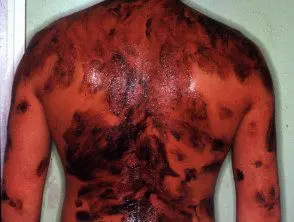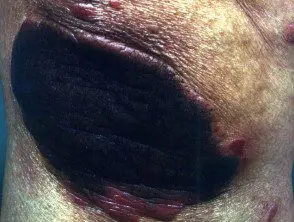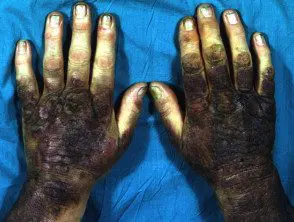Introduction
Coal tar or crude coal tar is obtained by destructive distillation of bituminous coal at very high temperatures. More than 10,000 different compounds are believed to form coal tar, but only about 400 have been identified. The main groups of compounds that form crude coal tar are 48% from hydrocarbons, 42% from carbon, and 10% from water.
In its natural form, coal tar is thick, almost black, viscous liquid with characteristic odour. It is most often found in solution form (0.1 to 20%) and is mixed with other ingredients, such as salicylic acid and sulfur, to make lotions, creams, ointments, and shampoos. It has been used for decades to help treat climbingitching and inflammation of psoriasis, eczemaand other skin disorders.
Traded coal tar preparations in New Zealand include:
- Coconut oil compound Ointment (Coco-Scalp™) for scalp psoriasis
- Egopsoryl TA Gel™ to apply to psoriasis plates
- polytar Emollient and liquid for bathing
- Shampoos such as Polytar™, Sebitar™, Ionil T™, and Fongitar™
However, crude and refined coal tar preparations are still available through your pharmacist, who will prepare any coal tar preparation as prescribed by your doctor.
What is coal tar used for?
Coal tar use is declining as newer compounds effective against different forms of psoriasis are taking its place. However, it still has the advantages of being low cost and causing less systemic toxicity compared to more modern therapies.
Coal tar is still used to treat a variety of skin disorders, particularly conditions where the skin is scaly and scaly.
- Psoriasis of the scalp
- Palmoplantar pustulosis
- License plate psoriasis
- Atopic dermatitis
How coal tar works to treat these conditions is not fully understood. Seems to have antimicrobial, antipruritic (reduce itching) and keratoplastic (normalize curb skin growth and reduce the flaking effects).
Raw coal tar for psoriasis



How to use coal tar
Coal tar can be combined with other ingredients to make creams, ointments, paints, pastes, gels, soaps, solutions, and shampoos. Follow the directions on the label closely for how to use your coal tar preparation. Listed below are some general tips for using coal tar products.
- Apply at bedtime if possible to avoid daytime nuisances from odor and staining.
- Leave on skin for at least 2 hours unless otherwise directed by your doctor
- If treating the scalp, apply with a downward stroke in the same direction as hair increase
- Cover or wrap with bandages to help the preparation stay in place and prevent staining. Do not use plastic wrap as this can cause irritation and infection
- Do not apply to infected, blistered, raw, or weeping areas of skin.
- After applying coal tar preparations, protect the treated area from direct sunlight and do not use a sunlamp unless otherwise directed by your doctor.
Goeckermann's regime
The Goeckerman regimen is the application of 1 to 10% crude coal tar and exposure to Ultraviolet radiation (UV-B) for the treatment of chronic plaque psoriasis and occasionally other inflammatory Skin diseases. Exact details vary by facility using the regimen, which is now rare despite providing long-lasting remission for some patients
undesirable effects
Coal tar preparations are well tolerated by most patients. It may initially cause mild itching or skin irritation as your body gets used to the medicine. However, if this continues stop using the preparation and consult your doctor.
When used on the scalp, it can temporarily bleach bleached, color-treated, light blonde, or gray hair. Coal tar also stains skin and clothing. The skin blemish will disappear after you have stopped using the preparation.
Coal tar can cause photosensitivity, hence the need to stay out of direct sunlight when using these preparations. In some cases, your doctor may use the Goeckerman regimen, which is a combination of coal tar with UVB phototherapy. This has been found to be particularly successful in treating psoriasis.
There is some controversy about the carcinogenic (Cancer-causative) potential coal tar. In animal studies, it has been shown to increase the chance of skin cancer. However, in human studies, an increase in incidence of cancers has not been found after 75 years of documented use.

